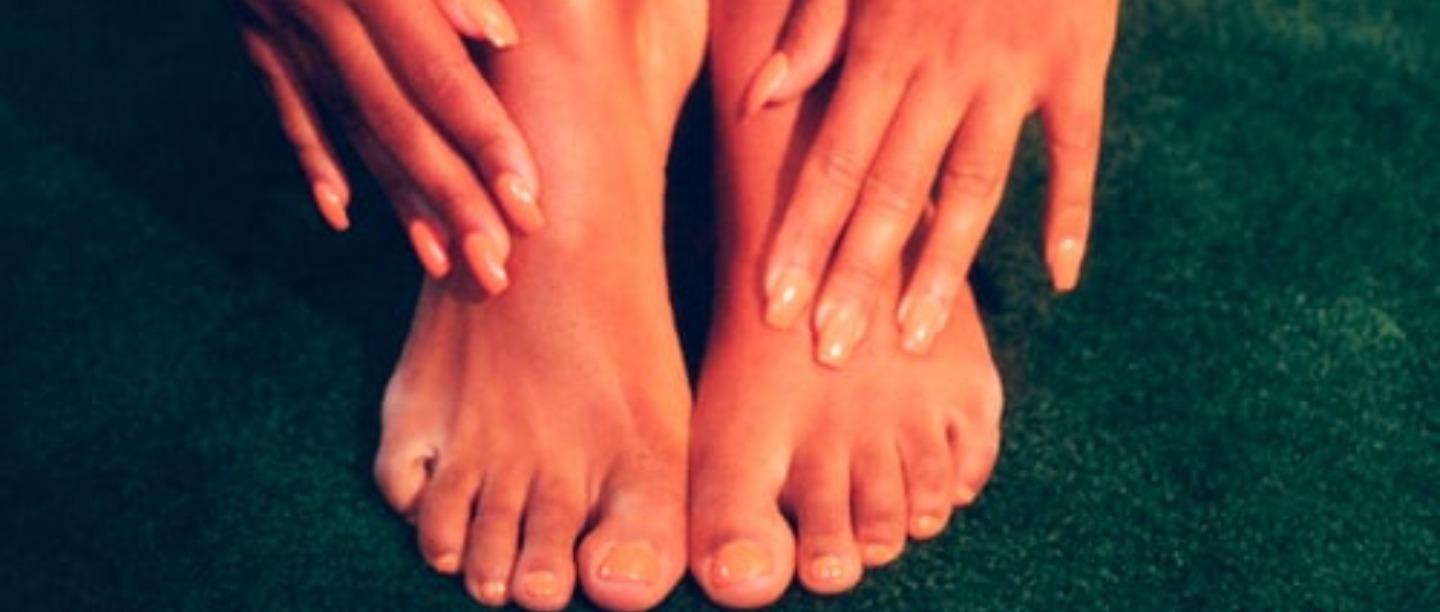Your toenails serve a purpose which is to protect your toes. They’re basically made of keratin which is a protein also makes up your skin, fingernails and hair. It’s keratin that makes you resistant to lead a healthy life daily. Physical activity, friction from your shoes and sweaty feet can all cause some health complications, one of these is ingrown toenails.
Table of Contents
What Are Ingrown Toenails?

Ingrown toenails occur when the edges of the corners of your nails grow into the skin next to the nail. The most common ones occur in the big toe. It is also known as onychocryptosis and is a pretty common form of nail disease. It’s a painful condition as the nail could grow so that it cuts into one or both sides of the nail bed.
Ingrown toenails can result in pain, swelling, redness and even infection. Most of the time, this can be treated at home, but if the ingrown toenail pain is too much, then a doctor should be consulted. If you have diabetes or another condition that stops the blood flow to your feet, then you’re at a greater risk of complications of ingrown toenails and you should definitely go to a doctor.
What Are The Causes Of Ingrown Toenails?
When an ingrown toenail first appears, your toe gets hard, swollen and tender. Later, it may get infected and feel sore. They are most common and painful among teenagers as they usually have sweaty feet and it’s mostly the big toe that gets infected. Even older people are at risk because toenails thicken with age. After the redness, pain and swelling the nail infection may become severe. Sometimes, a small amount of puss can also be seen being drained from that area. Ingrown toenails may occur for multiple reasons. Here are some of the causes of ingrown toenails:
- If you’re cutting the toenails incorrectly. Cut the nail straight across since angling the sides of the nails can make the nail to grow into the skin.
- It can also occur if you have irregular and curved toenails naturally.
- If you’re wearing footwear that is very narrow from the front and puts a lot of pressure on your big toes.
- If your socks and stockings are too tight or your shoes are too flat, narrow or tight for your feet.
- If you’ve got a toenail injury (if you’ve stubbed your toe or dropped something heavy on your feet). Kicking a ball repeatedly can also cause it (football enthusiasts, take note).
- If you have poor posture.
- Due to poor foot hygiene and not keeping it dry or clean.
- If you’re genetically prone to it.
- Athletes are more likely to suffer from ingrown toenails especially when you put a lot of pressure on your feet for long periods of time these are like football, kickboxing, karate etc.
- Even ballet dancers are more prone to this because they put pressure on their feet for long periods of time.
What Are The Symptoms Of Ingrown Toenails?
As mentioned before, ingrown toenails are a common occurrence but they can be extremely painful. They usually worsen and becomes more severe as the stages pass. The early symptoms of ingrown toenails can include:
- Skin next to the nail becoming tender, swollen or hard.
- Fluid building up around the toe.
- Pain when pressure is applied to the toe.
Once the infection becomes worse and the toe becomes infected, then the symptoms of ingrown toenails include:
- Extreme redness around the toe.
- Swollen skin in the infected area.
- Bleeding toenail.
- Puss oozing out around the toenail.
- Overgrowth of skin around the toe.
The best way to stop it from becoming a chronic problem is to take immediate action when you can see early signs of ingrown toenails.
What Are The Best Home Remedies For Ingrown toenails?

If the problem becomes unbearably painful and severely infected, you can always try home remedies for ingrown toenails to fix the problem. Here are some ingrown toenail treatment that you can try at home and that may work when the ingrown toenail symptoms aren’t that severe:
- Soak your feet in warm soapy water: Soaking the affected foot in warm may help ease the pain and reduce the swelling. You should ideally soak your foot in water thrice a day for up to twenty minutes at a stretch. Adding some soap salts and Epsom is a good idea. You can even add a bit of antiseptic liquid to expedite the process.
- Soak your feet in apple cider vinegar: This has been a home remedy has been around since very long for ingrown toenails. Apple cider vinegar is believed to have antiseptic, anti-inflammatory, and pain-relieving abilities. For this you need to prepare a bucket of warm water combined with ¼ cup apple cider vinegar. Soak the affected foot for up to 20 minutes daily and dry it completely after you’re done soaking the foot.
- Pack the area with dental floss and cotton: Another thing you can do is tuck small bits of cotton or waxed dental floss under the edge of an ingrown toenail to aid its growth in the right direction. However, some studies say that this increases the pain and also allows harmful bacteria to thrive on your foot. You could soak the cotton or floss in alcohol before application to reduce this risk.
- Apply antibiotic ointment carefully: Using an over-the-counter antibiotic cream or ointment can reduce the risks of infection. You can apply ointment to the affected toenail as per the instructions on the tube and use it thrice daily. Remember to bandage the toenail after application. It is better to consult a doctor before using an ointment you’re unsure of.
- Only wear comfortable shoes and socks: If your shoes are too tight or socks or stockings don’t allow your foot to breathe, then you’re at a higher risk of this condition. To prevent ingrown from developing or getting worse, you should always have on footwear that fits but allows for some space to be left in the toe bed. During the healing time, don’t wear shoes whenever possible, wear sandals and open chappals so that the pressure on your toenails is limited.
Medical Treatment For Ingrown Toenails
The best thing to do is to consult a general physician before trying out any medical treatment for ingrown toenails. But these are some of the things you could try if at-home remedies don’t treat ingrown toenails.
- Take over the counter drugs for pain relief: If there is swelling on your toe or if the home remedies are not working, then over the counter painkillers are a good option to subside the pain. However, this is a temporary relief option a more serious route needs to be taken for actually removing the ingrown toenail.
- Use a toe protector: It is basically a cushioning barrier for ingrown toenails and are rings that fit around the affected area or as a covering for the entire toe. They also help soften the area around the toenails.
- Try a toe brace: These are usually made up of thin, adhesive material and are glued to the top of the toe. They help shield your skin from sharp, ingrown nails that grow into your skin. You can get them at any pharmacy.
- Consult a doctor: Once all this fails you can go see a doctor if the redness has become very severe and the pain is throbbing. They may prescribe you some oral medicine for ingrown toenail that will subside the infection.
- Nail removal: Full or only ingrown toenail removal may be necessary if the condition doesn’t improve. A local anesthetic would be given to you and the doctor would remove part of the nail’s border, the underlying nail bed or the middle part of it. If this is recurring, then the nail may be removed as the last resort.
FAQs
How to prevent ingrown toenails?
There is no sure way of preventing ingrown toenails, especially when they occur due to injury or a genetic shape of your toes. However, you can keep your feet clean at all times, wash them often and not let sweat stay for too long. Wear the right size shoes to avoid your toenails getting squashed.
When should one look at medical treatment for ingrown toenails?
If you have tried home remedies for ingrown toenails such as dipping your feet in warm water and applying antiseptic cream, and it still doesn’t get better, then you can look at medical treatments. If the pain is excruciating, you can look at going to a GP.
Can the medication cause any side effects?
This depends on what medication you’re taking. We suggest that you ask your doctor specifically what side effects the medicine for ingrown toenail can cause.
How to know if ingrown toenail is infected?
You can check if the ingrown toenail is infected or not with 3 simple ways:
1) Check if the skin around toenail feels warm or hot
When a nail is infected, the area around it becomes hot and an extreme pain accompanies the hotness. If you will leave the infected toenail untreated, it may develop a fever.
2) Watch for excessive hard or red skin around the toenail
One of the symptoms to check if your ingrown toenail is infected or not is to check if the skin around the toenail is red. If the redness around the toenail increases with time, it means the area is infected.
3) Look out for green or yellow pus
Having pus around toenails is a sure sign of infection. The pus looks green, yellow or white in colour and is surrounded around the red area.
These were the signs to know if the toenail is infected or not, but if you find any of these symptoms or have a doubt, make sure to consult a doctor.
How to get pus out of ingrown toenail?
To get the pus out of ingrown toenail, you can simply use a home remedy. Soak your foot in lukewarm water and mix Epsom salt in it to soften the area around your toenail. Doing so will help to drain out the pus easily and reduce the pain.
Also Read: How To Do Pedicure At Home? Step By Step Guide!
How To Get Your Feet Pretty For Your Wedding!
POPxo is now available in six languages: English, Hindi, Tamil, Telugu, Marathi and Bangla.
Love all things colourful and cute? Take it up a POP with POPxo Shop‘s collection of super fun mugs, phone covers, cushions, laptop sleeves and more!



